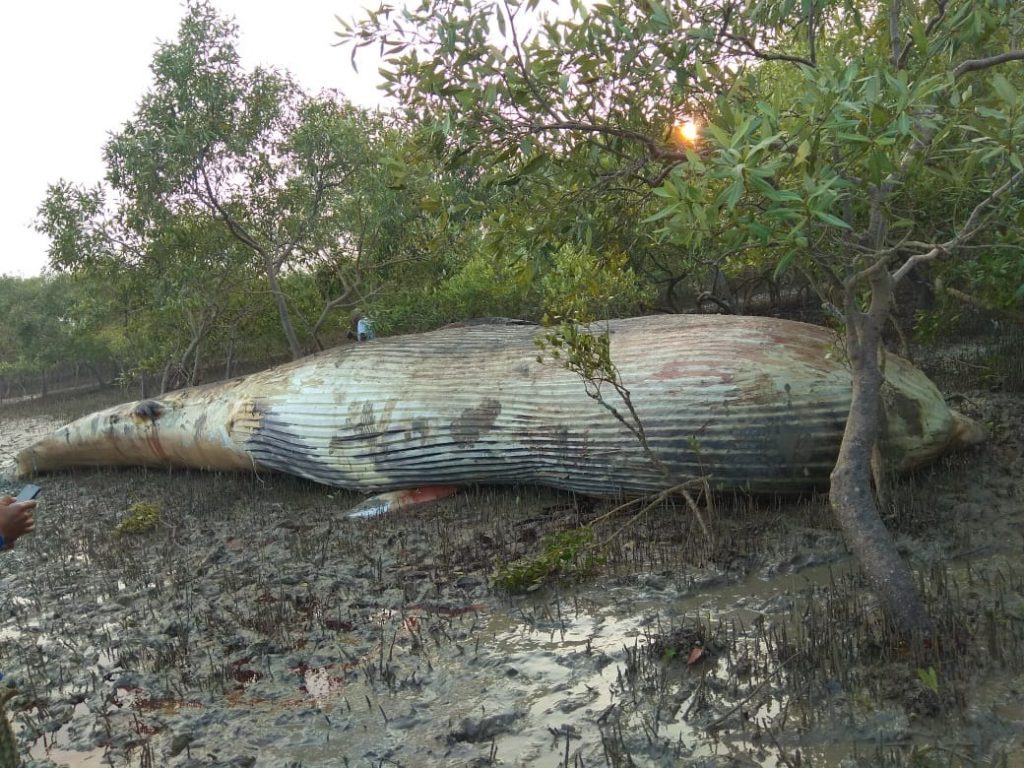Kendrapara: Forest personnel of Bhitarkanika Range Friday found a nearly 30-feet-long semi-decomposed carcass of a Baleen Whale that had washed ashore on the banks of the Kantia Hai mangrove forest block near Pravati village in Talachua Forest Section inside the Gahirmatha Marine Sanctuary, said Forester Kapilendra Pradhan of Talachua Forest Section.
Official sources said the whale might have died in the recent past as the carcass is semi-decomposed. It might have been killed in the deep sea and its body came to the coast during high tide from the Bay of Bengal. The reason for the whale’s death has not been ascertained.
The veterinary surgeon of Rajnagar is going to conduct an autopsy on the whale Saturday, said Subrat Kumar Patra, the ACF–cum-in-charge of Bhitarkanika Forest and Wildlife Range.
Patra said marine expert Dr Shiba Parida went to the spot to identify the whale’s species and to find the reason for its death.
The rise in sea levels and changes in sea temperature will make whales vulnerable, and they may not be able to adapt quickly enough to survive. Arctic and Antarctic whale habitats face a threat from climate change. Whales will also face challenges in finding food as there is likely to be a decline in the krill population, which is the main food for many large whales.
Baleen Whales are one of the largest animals on earth. They have a comb-like fringe, called a baleen, on the upper jaw which is used to filter plankton, as well as small fishes and crustaceans. They are the largest whale species.
The characteristic baleen plates and paired blowholes help distinguish Baleen Whales from toothed whales. All cetaceans have a long, strong diaphragm which allows them to rapidly exhale as they surface and quickly inhale before submerging.
Early humans hunted whales for food and oil. In the 19th and early 20th centuries, before the invention of plastic, whales were hunted commercially for their baleen or ‘whalebone’ as well as for oil. The whalebone was used to make women’s corsets, buggy whips, and umbrella ribs.
The population of Baleen Whales is severely depleted due to commercial whaling, forest sources said.
On October 31, 2018 foresters had found a 52-feet-long decomposed headless baleen whale on the Habalikhati coast in Rajnagar Forest and Wildlife Range.
Similarly, the forest personnel of Rajnagar Forest Range had found a 66- feet-long dead whale February 5, 2016 which had washed ashore on the coast of the Chinchiri River’s mouth inside the Gahirmatha Marine Sanctuary.
PNN
